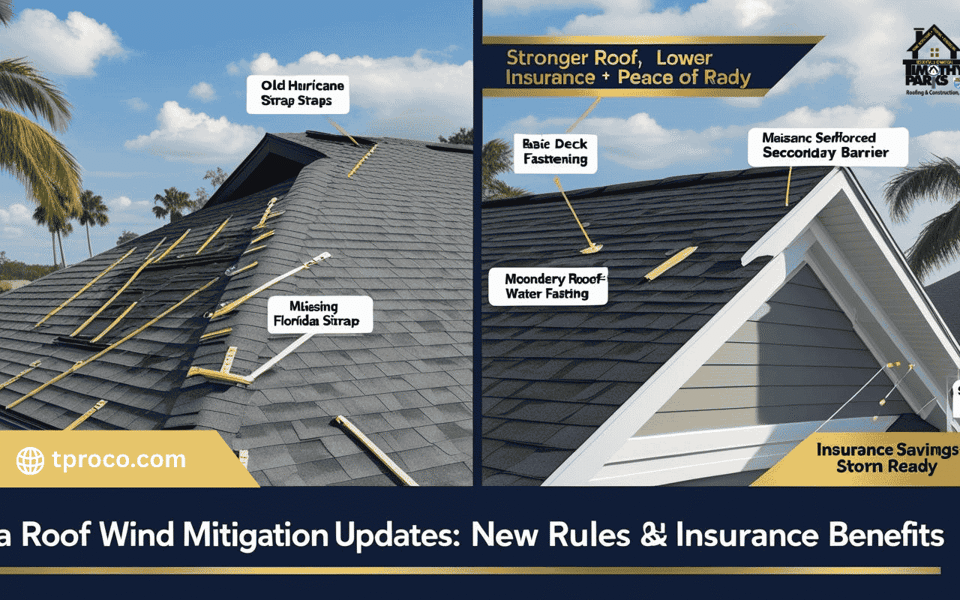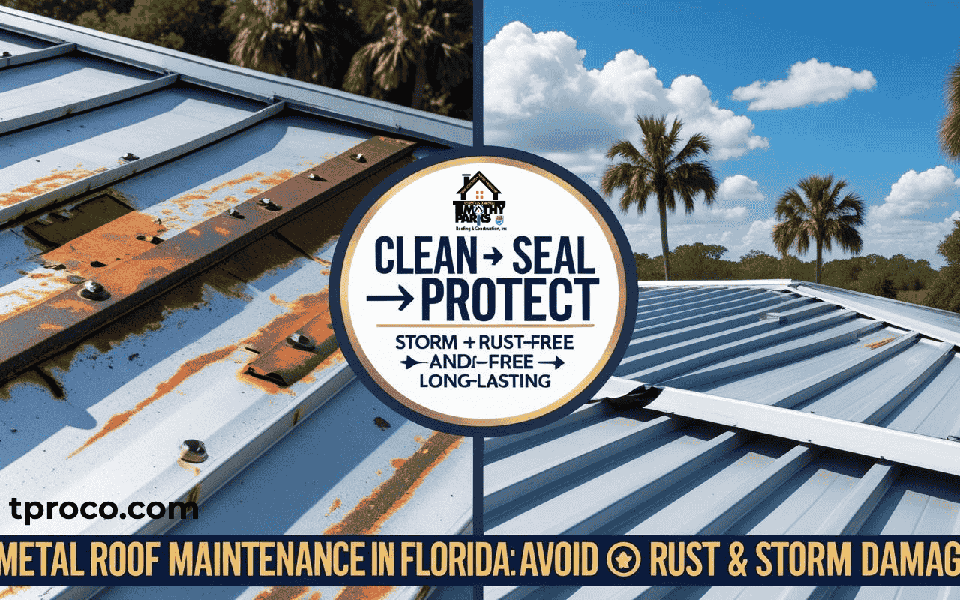Our Blogs
Green Roofing Solutions: Build a Sustainable Florida Home 🌱
As concern for the environment grows, many Florida homeowners are looking for ways to reduce their carbon footprint—starting right at the top of their house! Eco-friendly roofing solutions not only help protect the planet, but also offer perks like improved insulation and potential savings on utility bills. In this blog, we’ll explore various sustainable roofing materials, discuss their advantages in Florida’s climate, and outline practical steps you can take to create an eco-conscious roof. Whether you’re building a new home or renovating an existing one, these green solutions can help you do right by Mother Nature and your wallet.

Why Sustainability Matters in Roofing
Florida’s unique ecosystem—encompassing coastal areas, wetlands, and diverse wildlife—faces threats from climate change, pollution, and excessive energy consumption. Traditional roofing materials can contribute to urban heat island effects, wasteful resource usage, and increased carbon emissions. By opting for green roofing, you:
-
Lower Energy Costs: Reflective roofs or vegetative layers can keep your home cooler.
-
Reduce Landfill Waste: Long-lasting materials mean fewer replacements over time.
-
Improve Air Quality: Green roofs can filter air pollutants and even support local biodiversity.
Top Eco-Friendly Roofing Materials
Metal Roofing
-
Longevity: Properly maintained metal roofs can last 40–70 years.
-
Recyclability: Many metal panels contain recycled content and can be recycled again at end-of-life.
-
Reflectivity: Metal surfaces can reflect solar heat, reducing cooling costs.
-
💡 Pro Tip: Opt for lighter-colored or reflective coatings specifically designed for hot climates like Florida’s.
Clay or Concrete Tiles
-
Natural Materials: Typically derived from abundant resources.
-
Durability: Can withstand harsh weather for decades, though some types are vulnerable to cracking.
-
Insulation & Ventilation: The air gap under tiles helps dissipate heat.
-
🌱 Green Aspect: Clay and concrete are locally sourced in many areas, reducing transportation emissions.
Recycled Shingles
-
Composition: Made from post-consumer plastics, rubber, or wood fiber.
-
Aesthetics: Mimic the look of slate or cedar while diverting waste from landfills.
-
Performance: Comparable durability to traditional asphalt, with some products offering superior impact resistance.
-
⚠️ Check Certifications: Ensure the manufacturer meets environmental standards and local building codes.
Living (Green) Roofs
-
Vegetation Layer: Low-maintenance plants like sedums or native grasses root in a lightweight growing medium.
-
Insulation: The soil and plant layer can stabilize indoor temperatures.
-
Stormwater Management: Green roofs absorb rainwater, reducing runoff and easing the burden on drainage systems.
-
🛠 Engineering Caution: Not all structures can support a living roof. Consult an expert for load-bearing assessments.
Energy-Efficient Design Elements
Beyond material choice, certain design aspects can further increase your roof’s eco-friendliness:
1. Cool Roof Coatings
-
Reflective coatings that bounce solar rays away from your roof.
-
Lowers attic temperatures, reducing AC usage.
-
💡 Pro Tip: Look for ENERGY STAR-certified products for proven performance.
2. Proper Ventilation & Insulation
-
Ridge vents, soffit vents, and attic fans help expel hot air.
-
Adequate insulation prevents cool air from escaping.
-
🧐 Installation Note: The synergy of ventilation and insulation significantly impacts your energy bill.
3. Rainwater Harvesting
-
Integrate a gutter system that channels water into barrels or cisterns.
-
Reduces municipal water usage for irrigation.
-
🌱 Garden Boost: Harvested rainwater is free of chemicals found in tap water, better for plants.
Cost vs. Long-Term Value
Green roofing materials can carry a higher upfront price than traditional options like basic asphalt shingles. However, consider the long-term advantages:
-
Reduced Energy Bills: Reflective and vegetative roofs can cut cooling costs, offsetting initial expenses over time.
-
Lower Maintenance & Replacement Frequency: Durable materials mean fewer repairs and replacements.
-
Potential Tax Credits & Incentives: Check local and federal programs that reward energy-efficient upgrades.
Conclusion
Embracing eco-friendly roofing in Florida can yield both environmental and financial rewards. From reflective metal roofs and locally sourced clay tiles to fully vegetative systems, your choices today can reduce energy usage, combat the heat island effect, and lessen your home’s overall carbon footprint. While the journey might involve higher upfront costs or structural modifications, the payoff—healthier indoor climates, smaller energy bills, and a positive impact on our planet—makes it worthwhile. As more homeowners go green, Florida’s landscape can only benefit from a future where roofs don’t just shield us from the elements but also help sustain the environment.
Ready to Go Green on Your Roof?
Share your eco-roofing journey or ask questions about sustainable materials and designs! Tag us on social media with our branded hashtags:
#tproco #tppro #tprci #urro #rrfl
#GreenRoof #SustainableLiving #EcoFriendlyHome#FloridaHomes #TampaBayGreen #OrlandoEco
Schedule a Free InspectionAbout the Author

Timothy Parks
CEO
📢 Stay Informed: Communication & Consent Updates
At Timothy Parks Roofing & Construction Inc., we prioritize transparency in our communications. By submitting a request, you agree to receive calls, texts, and emails regarding our services. Standard messaging rates may apply. You can opt-out at any time by replying STOP or contacting us directly.
✅ Florida License: #CBCO59592, #CCC1327217, #HI4878
📌 Privacy & Terms: Read our Privacy Policy and Terms of Service.




